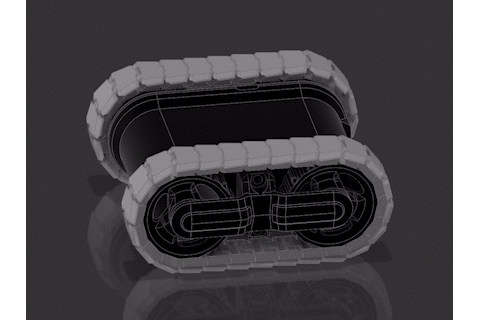
Introduction
This is a project that I designed like a year ago, and only got to building more recently. Too many RC tanks I see online either use tiny N20 gearmotors, or sh***y plastic continuous servo motors. SLOW! LAME! The aim of this design is to make an RC tank that is small, but also has POWAH. To do this, I squished 25mm diameter brushed gearmotors into the smallest, most sturdy body I could. I also designed some 3D printable tank treads.
3D design
This tank was designed in Autodesk Fusion 360, with a focus on maximum compactness and structural integrity, whilst hopefully looking somewhat sleek. I probably spent too long on this, but I did enjoyed optimising each part of the design!
Treads
I wanted to design some miniature treads that would be strong and flexible. The process of designing these took the longest due to the iteration and refinement that was required to get these right.
This is one of my early test prints (deliberately broken to test strength):
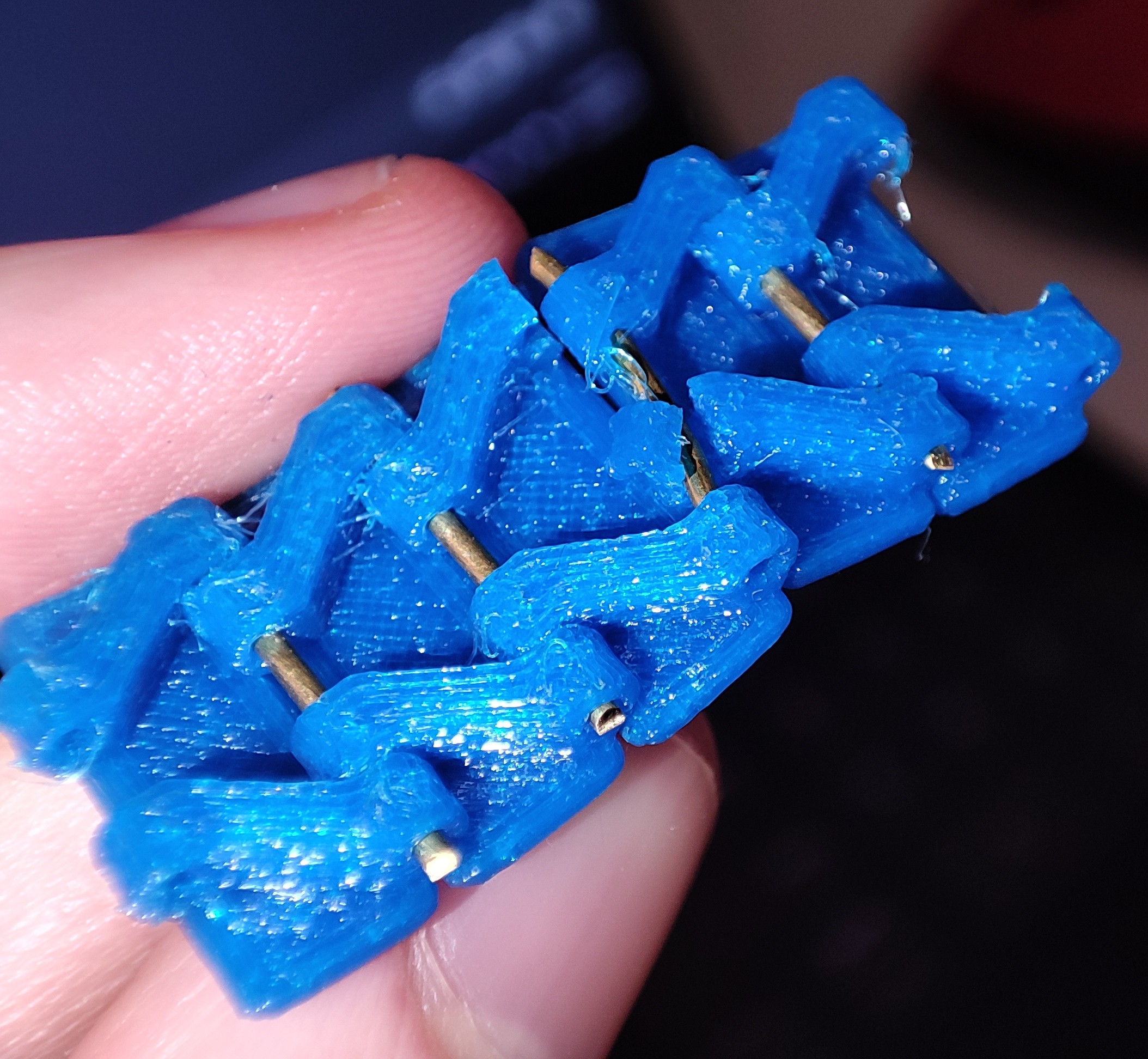
The design of these early treads was simpler, and I was initially trying to use brass rods. Unfortunately using rods instead of screws doesn't work in such small treads, as they are prone to slipping out, plus they can bend under load.
I also tried using flexible TPU material to print the whole tread in a single piece, but I dismissed this quickly because the TPU treads were pretty stiff, and just not as cool as a tread made of discrete segments!
Below is the final tread design. The treads are linked together with course-threaded M1.7 screws, and have grooves that match the teeth on the wheels. I maximised the material around the hinges for the sake of strength, and when printed out of PETG they have are plenty durable. I also gave them cool angular sides which gives the tank a +20% speed boost.
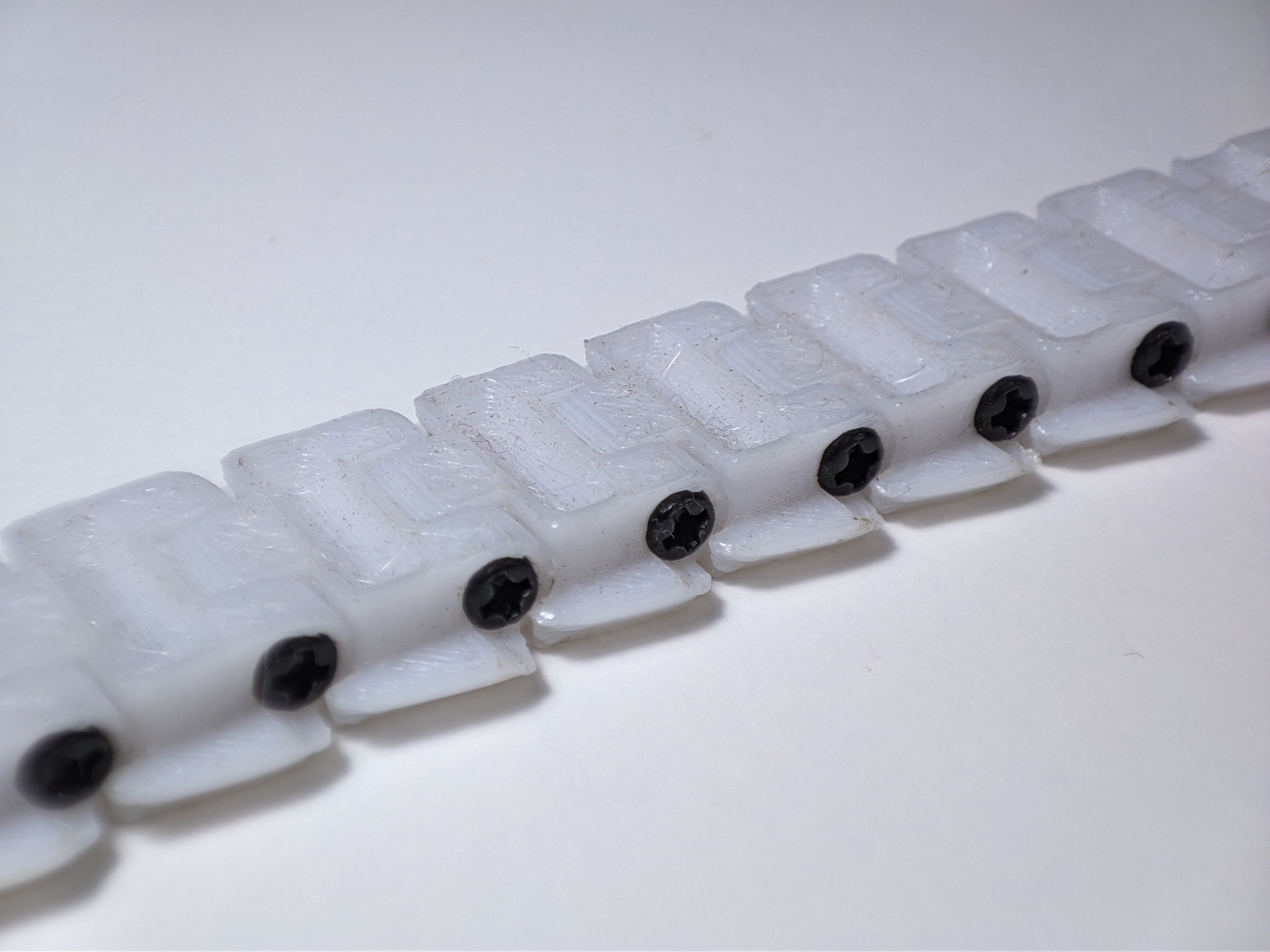
Body
Below is a cross section showing how the space for each component is arranged. As you can see, the motors take up most of the area and extend into the wheels! Additionally, the motor shaft and idler screw tips would stick out of the sides if not for the part that covers and holds them in place. Two grub screws hold each motor in place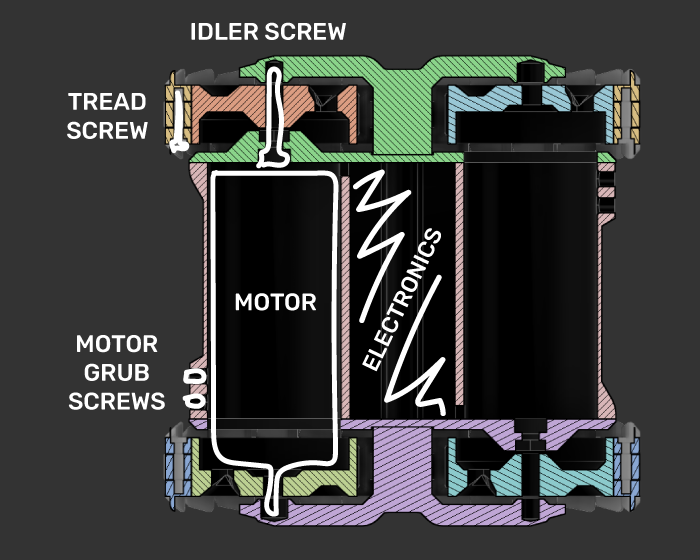
Design done!
Hardware
These are the motors I bought on Aliexpress:
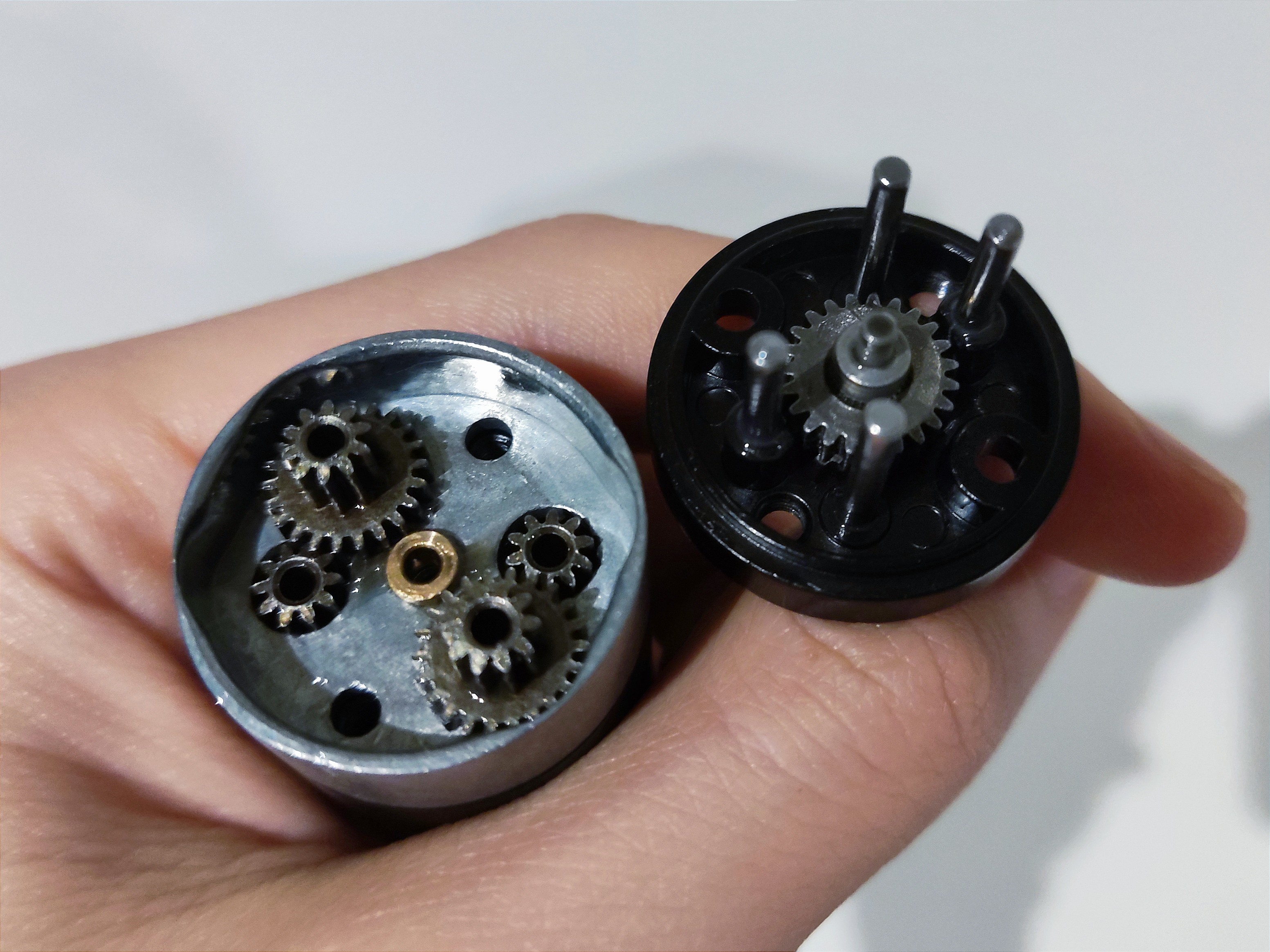
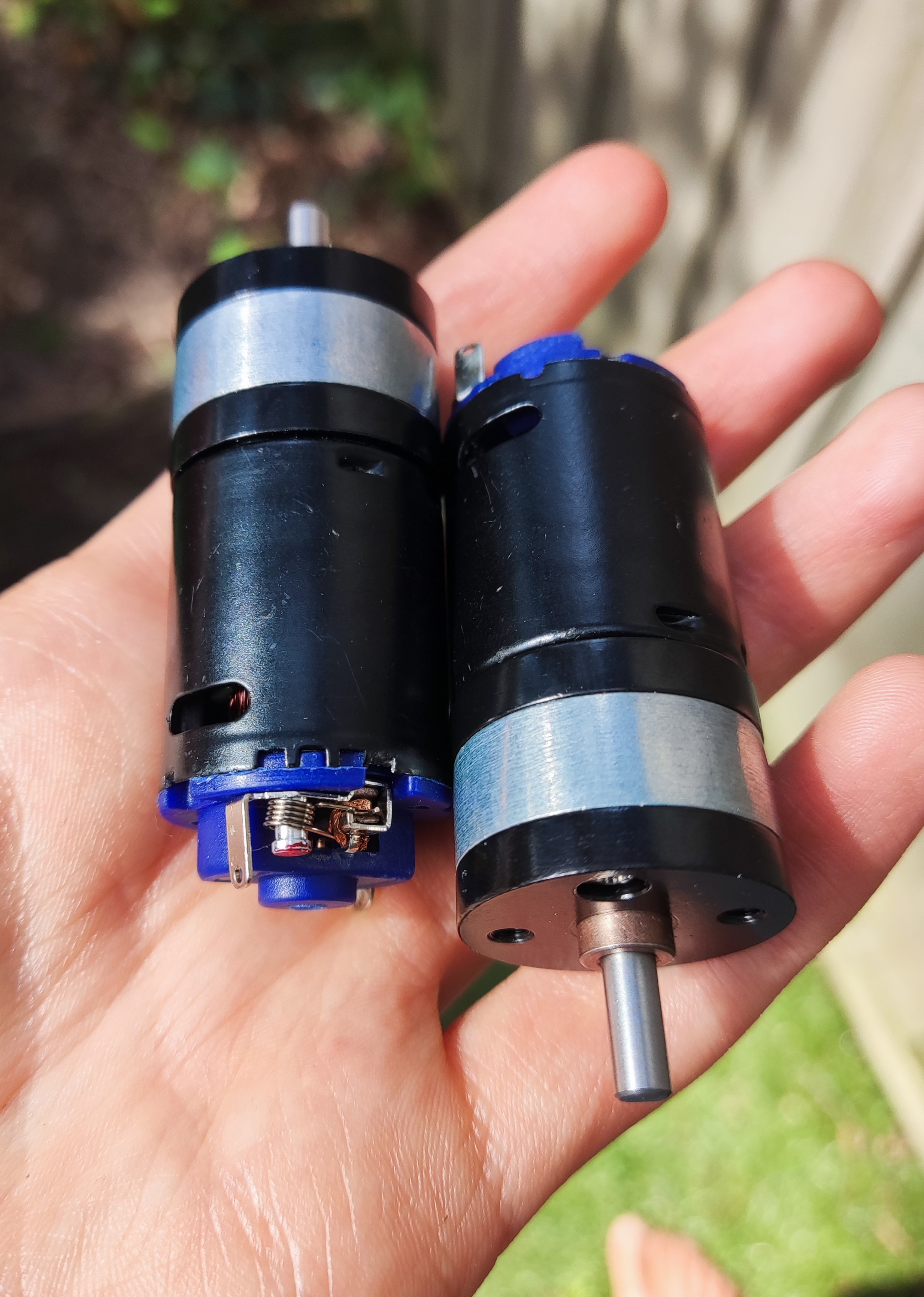
These are 25mm diameter 2083rpm brushed gearmotors. Brushed DC motors are hardly the apex of power systems, but a brushless system would be WAY more expensive, so I'm using these for now. Plus, they have more than enough power for the size of the tank.
Electronics
FPV related
I decided to use standard RC/FPV devices for the remote control and video transmission.
I was initially planning on using nRF24L01 transceivers, and making a custom-modelled 3D-printed hand-wired Arduino-powered controller, as I have seen some on the internet do. However, even after buying most of the the parts necessary for this, I considered the complexity that this would add, and decided against it. Instead I opted to purchase a proper FPV controller, which communicates over the amazing ELRS protocol. This allows me to use one of the tiny 1x1cm, SMD antenna receiver modules.
I also picked up a tiny FPV camera from Foxeer, and a tiny FPV analog video transmitter. I could have used an ESP-32 camera and stream the video over a web server or something, but again, this is much simpler.
Here is a family photo of the three aforementioned electronics next to an Aussie $2 coin:
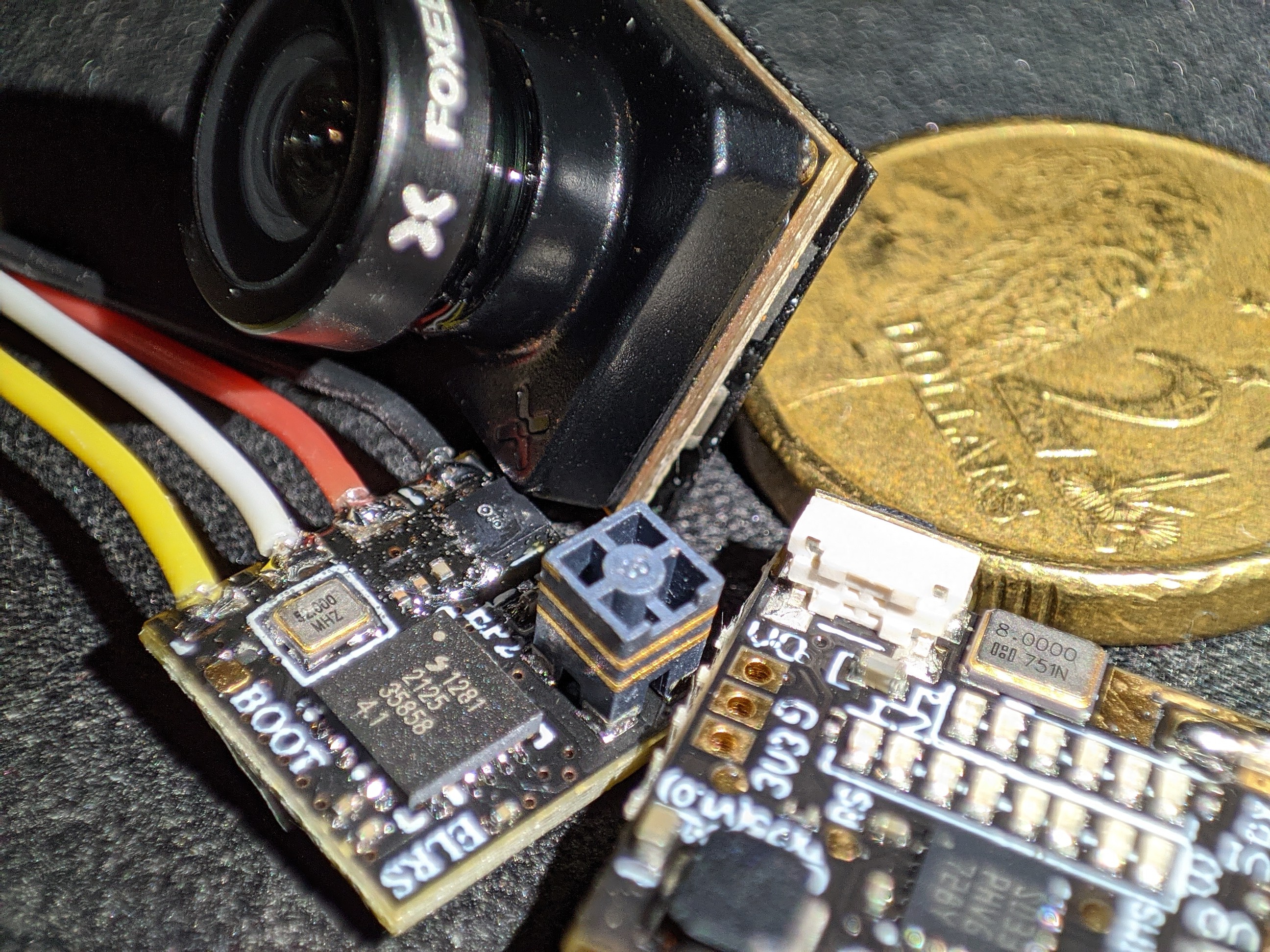 Awww, so cute!
Awww, so cute!The rest of the electronics
Here is where I transition from the RC/FPV ecosystem into just normal electronics. In my setup, I have a motor driver that is designed to be controlled by a microcontroller (and not by an RC system servo signal), so I put my smallest board to the task:

Again, so cute! This Pimoroni Tiny 2040 has an RP2040 aboard. It does the job great, but I won't actually be using much of its' potential. I chose this one which I already had, but any microcontroller that fits, and runs Arduino code, should work! (I think)
The Tiny 2040 has to receive commands from my ELRS receiver, and to do this I needed them to communicate over the CRSF (Crossfire) protocol that the receiver uses. Luckily CRSF is just a serial connection, and also luckily, somebody has written a library in Arduino for this protocol. You can find it on GitHub here. Super grateful to whoever wrote this. You can find a wiring diagram for this part in the build instructions.
The code is super simple, receive commands and tell the motor driver how to drive the motors! I attached the sketch in the files.
The motor driver I used is a board with a TB6612FNG chip, which is rated up to 1.2A on each of its' 2 channels. This is the one I had around, but you could use absolutely any as long as it is powerful enough (and you should probably find one that is more powerful than this one).
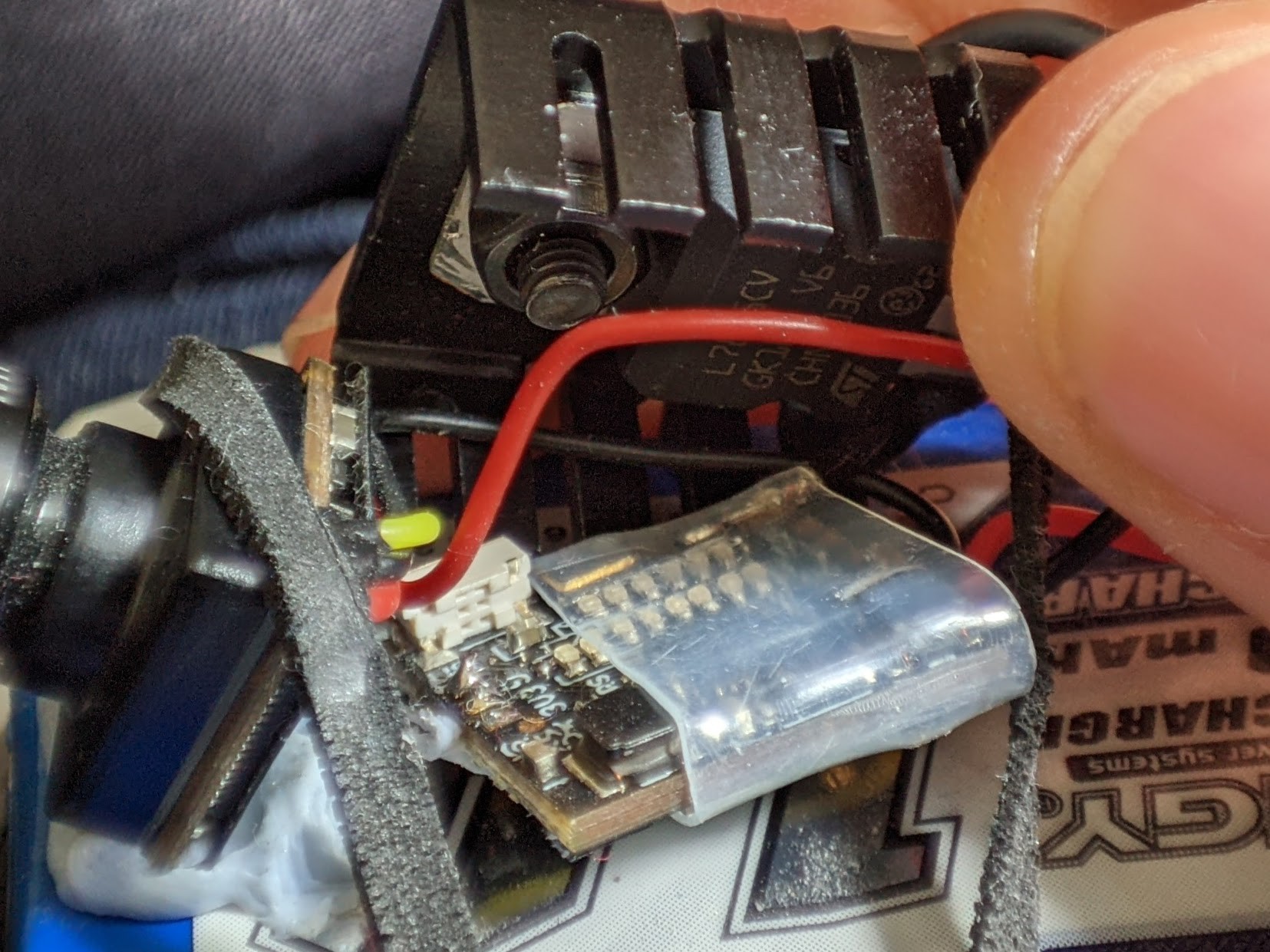
One last component is the voltage regulator. The battery is ~11.1v, but I need a nice 5V supply for many of the electronics. The only voltage regulator I had around was a linear regulator in a TO-220 package. This is what the black heatsink you see on the top is for. Just wanna say, I would NOT recommend using a linear regulator, as they, predictably, get very hot. The battery plugs directly into some headers that I soldered to the legs of the TO-220 package.
I put the camera, VTX and voltage regulator on the top, and the receiver, microcontroller and motor driver inside. These two groups of components are connected only by power wires. I was planning at one stage to print a proper cover for the battery and electronics on the top, but I couldn't get a design that actually made it look better than it already does.

The electronics fit snugly inside, and looks kinda pretty when you turn it on!
Completed project!
There is a short demo video for your enjoyment! It's REALLY fun just to drive around your house, kinda feels like you are a little animal running around. It can definitely go super fast, but my house doesn't have much space for speed, so I'm only using around 25% of the throttle.
In the end, this turned out as good as I could possible have hoped. It is heaps of fun to drive around, and designing it was fun too. I'll admit, some parts of the build (namely the blu tack, rubber bands and exposed wires) are pretty dodgy, but they haven't failed me yet!
I'll also concede that this isn't really meant to be a fully refined project. This is because I do actually have plans for a second version of this sometime in the future, but I'm sorting through a pile of other projects right now, so I'm not sure when I'll get to it. This version did succeed in confirming that a small, fast, RC vehicle is very fun!
 Tobias
Tobias